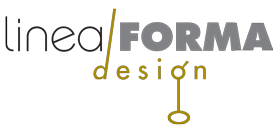Part One: Product Development
It is exciting to work with an artist on a product for artists. My client, the amazing Jennifer deWeber of deWeber Studios, is a painter and an entrepreneur. She is also a “plein-air” artist, that is, an outdoor or ‘open air’ painter.
The challenge: With this style of painting, an artist needs a portable, lightweight easel that can be packed up in a hurry if the weather changes suddenly. Jennifer saw a way to build a better portable easel that could carry most of an artist’s paintings and supplies, and easily attach to a tripod. She saw many of the existing easels opened top to bottom which was problematic as the palette had a different angle to the light than the painting and thus affected the way the color was perceived. After numerous experiments she had developed a workable concept opening on the side, had engineering drawings made, and patented the concept.
Product Development: She contracted with me to pull the concept together, do some value analysis and simplify the design. The original concept had brush storage, extra canvas storage, and a painting area for the current painting, as three separate boxes. I realized that a pair of custom channel extrusions could form the structure for a single box instead of three, and simplfy the whole design and the fabrication process resulting in lower weight and production cost. I built a 3D model of my concept, and it worked perfectly.
But, the only manufacturer I could find that had a stock extrusion die that fit my concept was in South Carolina, had no samples, and a 30 day lead time for the parts … too long of a delay to test our concept.
Solution: I had just decided to get my first 3D printer, so I ordered it, got it in 48 hours and by the next day, had printed out a half dozen samples of the 10” extruded parts needed to build a few prototypes for proof of concept. I created CAD files of all the sheetmetal parts and reviewed them with the local metal fabricators, who then created the two main boxes that form the clamshell design, and all the other parts for the lid and inner divider and door, and attached all the hinged parts using industrial strength tapes and magnets to form a beautiful carrying case that becomes an easel and palette in seconds. We have tweaked the first prototypes and the first production run is about to begin.
In Part Two, I’ll describe the graphic presentation side of the project, and how I worked with Jennifer to get her message out before the product was even produced. Stay tuned…
Share this:

